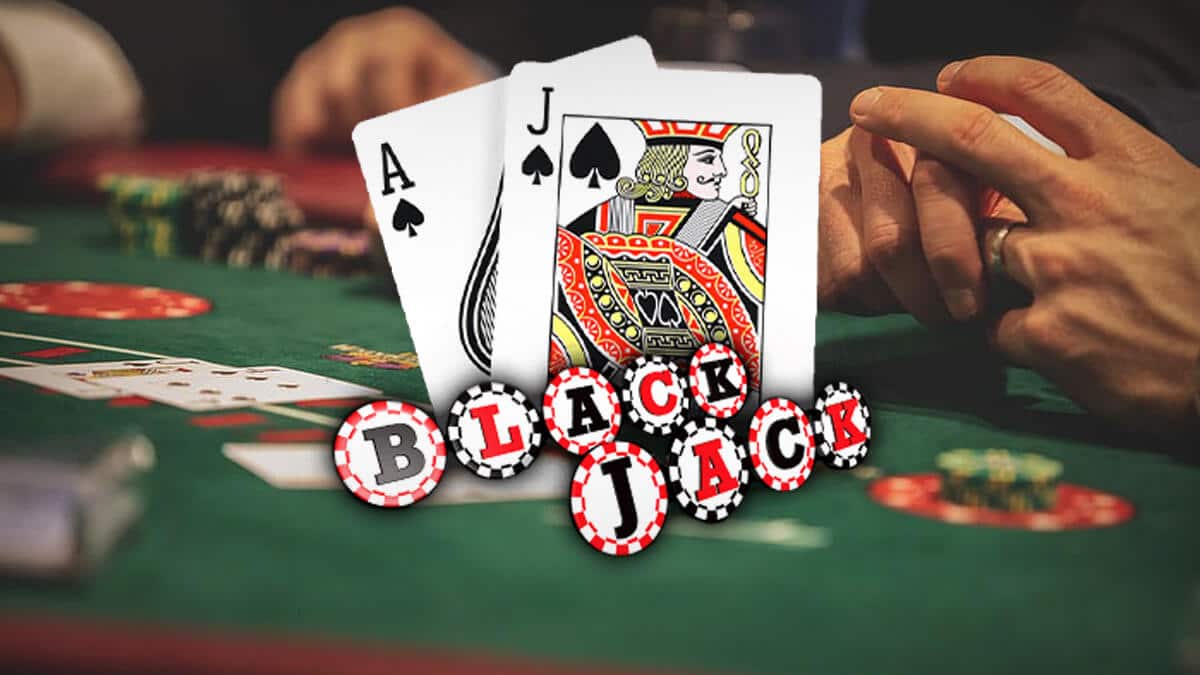Everything You Have To Know About Blackjack

Last Updated on September 2, 2024 by Mary
For many decades, card games have been a popular game activity. Even in the present day, casino players are more than happy to join a game of poker, baccarat, and, not to mention, blackjack.
The advantage of blackjack is that the basic rules are much simpler than, for instance, poker. This is why any card game enthusiast can join the (virtual) blackjack table and see what luck will bring him. Just like for other casino games, you do have to know what the rules are and what to pay attention to. Thankfully, we are here to help you with that.
Blackjack is the official name of the casino game, also known as twenty-one. Very little is known regarding the history of this card game. However, it is largely assumed that the game originated in Spain and France and conquered the rest of the world from there. This card game actually seems to first appear in the stories of the Spanish writer Miguel de Cervantes (1547 – 1616).
To find the origins of the name blackjack, we have to cross the ocean towards America. To popularize the game, an extra bonus was added whenever the ace of spades and the blackjack were on the table together. The bonus has by now disappeared from the game, but the name stuck.
What cards do you use to get to 21 points?
In blackjack, you are going up against the dealer of the casino, in this game referred to as the bank. You and the bank have a common goal: coming as close to the 21 points as possible. Do you end up above 21 points? Then you are busted, and you automatically lose the game. In the event of a tie, you will get your bet back, and you will get to try again.
This game explanation will tell you in a nutshell what is expected of you. Still, there is more to blackjack than you might think.
To fully understand the game, we first look at the most important element of blackjack. This is obviously the playing cards. All cards have their value. The numbered cards (2 to 10) count as their natural value.
Furthermore, the game has a jack, queen, and king. These cards are worth 10 points each. The ace plays an important role in blackjack. Whenever it appears, 1 or 11 points are added to the cards on the table. The ace gets the value that is best for you. This means that its value can change during the game of blackjack.
Say you start the game with a six and an ace. In that case, the ace can get you 11 points, making your point total 17. This is a total that might win you the game, although it might just as easily lead to a loss. It is worth the risk to draw an extra card. If this is, for instance, a five or higher, the value of the ace automatically changes to 1 point. Otherwise, you will be busted.
The Basic Rules of Blackjack
A game of blackjack starts with dealing with the cards. As a player, you will receive two cards face-up on the table. The dealer, on the other hand, deals himself two cards, one up and one down. ‘Up’ means anyone can see which cards are on the table. ‘Down’ means that the card is placed facing down. The dealer’s card will only become visible once you make the decision whether or not to keep playing. So, you do not know exactly which cards the dealer has. This makes it a gamble for you whether or not to request that extra card to beat the casino.
Of course, each player hopes to get a 10 (or jack, queen, or king) and an ace in that first round. You have 21 points straight away, and the profit will be yours, without a doubt. You will be paid out your bet times 1.5. However great this might sound, chances obviously are much greater that you do not instantly reach 21 points. In that case, you have two options: ‘standing’ or ‘hitting.’ If you stand, you gamble that the dealer has fewer points than you. This might be wise when you have 18, 19, or 20 points. Do you think that your point total is too low to win? Then, you continue the game and ‘hit’ by requesting an additional card.
The advantage for you, as the player, is that you determine whether you would like to draw extra cards. The dealer does not have this luxury. There are strict rules about when to add a card and when not to. A point total of 16 or less means that the dealer draws an additional card for himself. The dealer will cease playing once his point total is 17 or higher. This fact can influence your decision about whether to draw an extra card. If the dealer has 16 points, he will probably exceed 21 points and bust. This is why you should think about each move-through and not just consider your own cards before making a decision.
Splitting, doubling, and other blackjack terms
Each casino game has its terminology. In blackjack, it is also convenient to know what you are talking about. These are the most important terms you will come across:
Hitting and standing: hitting simply means requesting an extra card from the dealer. If you stand, you gamble that the point total is sufficient to win.
Double down: Is the point total of the first two cards 9, 10 or 11? Then, you have an opportunity to double down on your bet. The chances of a decent point total are good. However, there is a catch: you only get one more card from the dealer. Do you dare to take the risk?
Splitting: When the first two cards in front of you have the same value, you can opt to split. You will then get two separate hands of cards, which doubles your chances of winning (or losing, obviously).
Insurance: If the dealer’s first card is an ace, the chances of blackjack are relatively high. You can insure yourself against this by adding half of your bet. If the game ends in blackjack, you get the double amount of the second bet back. You lose the original bet; however, the ‘insurance’ somewhat compensates for this loss.
For the advanced player: counting cards
Of course, the cards you are dealt are purely a coincidence. But does this also mean that you can only win the game with a large dose of luck and hope that you are doing well by requesting an extra card or deciding against doing so? There are blackjack players who can answer this with a straightforward ‘no.’ They are trying to outsmart the casino by counting the cards.
There are various ways of counting the cards. One of the most popular strategies is the so-called Hi-Lo system. With this, each card gets a value of 1, 0, or -1. The value one is reserved for the numbered cards 2 to 6. The cards 7 to 9 get a 0 as value, and the tens, jack, queen, king, and ace are allocated -1. With this system, you can keep track of which cards, whether high or low, are in the game. The casino usually has an advantage when fewer cards remain, whereas you have better chances of blackjack when higher cards are left in the game. Knowledge of the remaining cards helps you to decide when to hit, stand, or double down.
It will be tricky to base your strategy on a counting system when playing the first couple of cards. After all, there are very few cards out of the game. The casino keeps on going on, round after round, with the same set of cards. This provides some opportunities. Unfortunately, more cards than the 52 are in a deck. Casinos do work with multiple decks of cards simultaneously. This is why not everyone is convinced that counting cards to increase your odds of winning really pays off.
Playing blackjack in the live casino
Whether you count cards or trust that you are making the right decision no matter what, blackjack is a game that undoubtedly brings you a ton of gambling fun. Virtual blackjack already gives you a chance to get to know the game well and perhaps even make nice amounts of money, although you might miss the excitement of a real casino.
Luckily, blackjack is also a game that you can play in a live casino. You will then take a seat at a real blackjack table via a video connection, and the dealer will deal the cards live. This way, you do not have to leave your home to get that special feeling associated with entering a casino.
- 7 Best Pragmatic Play Slots - November 1, 2024
- Mega Wheel Live Casino Game Review - October 31, 2024
- Funky Time Live Casino Game Review - October 31, 2024










